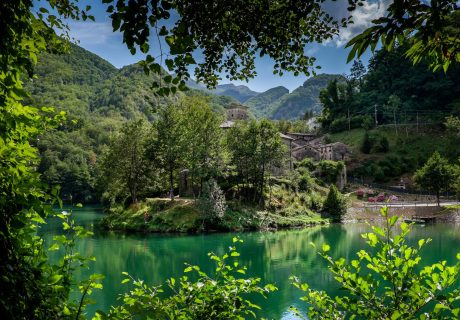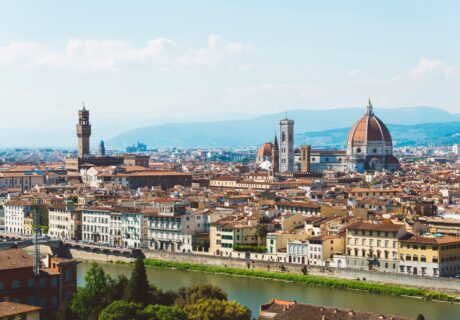Itinerary in Perugia
4 min · 29 May 2023

Positioned in the Nestore Valley in Umbria, Perugia is one of the most fascinating cities in Italy, with its medieval atmosphere projected into the future. Besides offering a rich cultural, artistic and historical heritage, it is world-famous for its cultural events such as Umbria Jazz (in July) and Eurochocolate (in spring and fall).
Follow us on this itinerary that will take you on a discovery of the city and its main attractions.
The itinerary starts from the heart of the old city, namely the splendid Piazza IV Novembre, which owes its name to the day the First World War ended. At the center of the square is the 13th-century Fontana Maggiore, among the finest examples of medieval Italian sculpture. It was designed by frà Bevignate and made by Nicola and Giovanni Pisano. It consists of two concentric polygonal basins entirely decorated with reliefs. The widest side of the square is occupied by the left flank of the Duomo, also known as the Cathedral of San Lorenzo. The building, erected between the 14th and 15th centuries, houses works of some importance, including Federico Barocci’s Deposition and G. Di Paolo’s Madonna delle Grazie. On the opposite side stands the massive Palazzo dei Priori, built in Gothic forms with marble, limestone and travertine. On the second floor is the monumental Sala dei Notari while the upper floors house the National Gallery of Umbria, one of Italy’s leading art collections. It houses works by the likes of Arnolfo di Cambio, Beato Angelico, Benozzo Gozzoli, Pinturicchio and Piero della Francesca, to name but a few.
Next to the Palazzo dei Priori is the Nobile Collegio del Cambio, one of the city’s most distinguished Renaissance monuments. Of particular interest is the Sala delle Udienze, where a valuable cycle of frescoes painted by Pietro Vannucci known as Perugino between 1498 and 1500 can be admired. From Piazza IV Novembre, take the picturesque Via Maestà delle Volte, lined with tower-houses and stunning palaces. Bending left again, one comes to Piazza San Francesco, overlooked by the Oratory of San Bernardino, erected in the second half of the 15th century. Famous is the facade, in delicate polychromy, sculpted by Agostino di Duccio. Moving to the northernmost corner of the city walls, we encounter the Church of St. Augustine, of typically Gothic foundation. Built in the 13th century, it is embellished with frescoes of relevant artistic quality. Continuing on, one reaches the Church of San Michele Arcangelo, one of the earliest early Christian churches in Umbria. The building, originally from the 5th-6th centuries AD, stands on one of the highest points of the city. A few steps from the church is the Etruscan Arch, also known as the Arch of Augustus, a monumental gateway in the ancient city walls.
Via Via Pinturicchio and Via Brunamonti we reach the Church of Santa Maria di Monteluce, which is characterized by its high artistic and architectural value. Built in the 13th century and modified several times, it has an elegant two-tone facade dating from the 15th century. Returning toward the center, we visit Piazza Matteotti, overlooked by the Palazzo del Capitano del Popolo and the Palazzo dell’Università Vecchia. At this point you treat yourself to a leisurely stroll along Corso Vannucci before diving into the wonders of Umbria’s archaeological heritage. The premises of the former Convent of San Domenico in Piazza Giordano Bruno houses the National Archaeological Museum of Umbria, which collects objects and materials from the Perugian and Umbrian territory. Continuing along Corso Cavour and moving away from the historic center, we pass under Porta San Pietro, also known as Porta Romana, one of Perugia’s medieval gates. Finally, the last stop on the itinerary is the Basilica of Saint Peter, built in the late 10th century. Inside you can admire a large number of works of art of considerable artistic merit.








